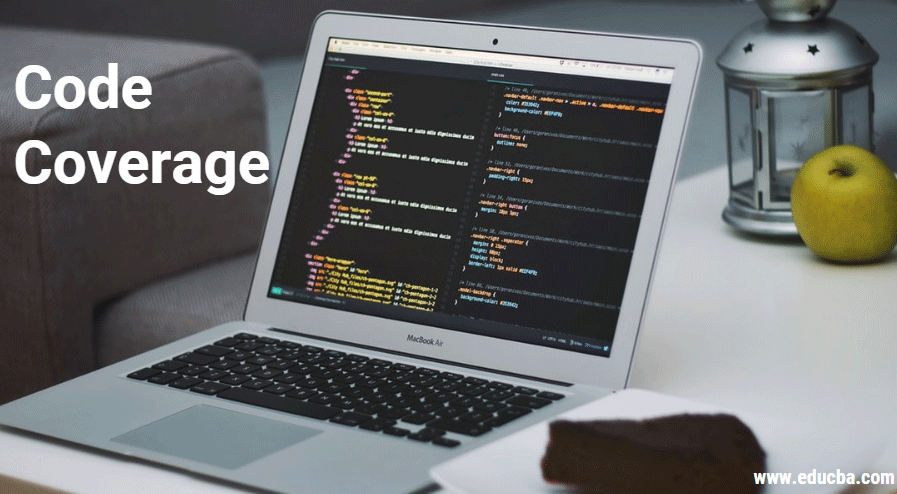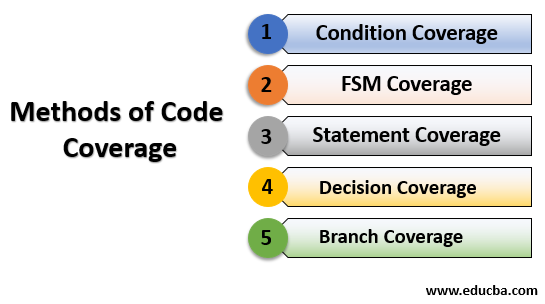Updated July 7, 2023
What is Code Coverage?
Developers do code coverage to measure the degree to which the coding of the application or component has been tested, shows the information of the running program, and helps to measure the test efficiency. Statement coverage, toggle coverage, branch coverage, decision coverage, and FSM coverage are the methods used by the code coverage. It also allows developers to create an extra test case to increase the code coverage.
How does Code Coverage Work?
However, if we consider it broadly, there exist 3 of the approaches that are as follows:
- Source Code Instrumentation: Source code instrumentation will add the instrumentation statements to the source code. Then, it will compile the code and the normal compile tool to get us an instrumented assembly.
- Intermediate Code Instrumentation: In Intermediate code instrumentation, the addition of new bytecode instruments the compiled files, and subsequently, a new class is generated.
- Runtime Information Collection: In Runtime information collection, we collect information from the runtime environment during code execution to determine coverage information.
Since the code gets executed under the test, the code coverage system would collect information on which statements are executed. Now, this information will be used as some of the basis of the reports. Code coverage methods vary based on the specific coverage information collected. There are different code coverage methods if we go beyond the basic statement coverage methods.
Methods of Code Coverage
There exist many methods of code coverage.
- Condition Coverage
- FSM Coverage
- Statement Coverage
- Decision Coverage
- Branch Coverage
1. Statement Coverage
- It is the white box test design technique wherein we deal with the execution of all of the executable statements at least once that exist in the source code. Calculating and measuring many statements in source code, as well as determining their executability based on given requirements, necessitates the need for code coverage.
- The method is necessary for deriving scenarios based on the tested code structure.
2. Decision Coverage
- This method is useful in reporting every Boolean expression’s true or false outcomes. But, unfortunately, the expressions in this coverage often become complicated. That is why it is quite difficult to get 100% coverage.
- That is the very reason that there exist various methods to report this kind of metric. These entire methods deal with the coverage of the most significant combinations. Decision Coverage provides great sensitivity to control the flow.
3. Branch Coverage
- When we talk about this type, we mean that each output from the code module gets tested. So, as an example, we can consider that if the outputs are binary, we will be testing True and False outputs.
- Branch Coverage helps us ensure that all the possible branches that come from each of the decisions and the condition get executed at least once.
- We can calculate the fraction of the independent code segments through the branch coverage method. In addition, this method enables us to find out what sections of the code don’t have branches.
There exists the formula for the calculation of Branch Coverage:
4. Condition Coverage
- Condition coverage, also called expression coverage, tells us how the variables or subexpressions in conditional statements get evaluated.
- Let us consider an example wherein an expression consists of Boolean operations such as AND, OR, or XOR that comprise the total number of possibilities.
- This method gives us much better sensitivity for controlling the flow than the decision coverage. This method doesn’t give us a guarantee regarding the full decision coverage.
There exists the formula for the calculation of Branch Coverage:
5. Finite State Machine Coverage
- This method is considered the most complex kind of code coverage method. The reason behind it is that this method works on the behavior of the design.
- In addition, this method verifies the number of times specific states are visited and transitioned. Furthermore, it determines the number of sequences considered in the finite state machine.
Advantages and Disadvantages of Code Coverage
Given below are the advantages and disadvantages:
Advantages
- It is quite useful in evaluating the code coverage’s quantitative measure.
- It also permits us to create extra test cases to increase coverage.
- It also permits us to locate those parts of the program that are not exercised by the test cases.
Disadvantages
- Even when a particular feature is poorly implemented within the design, its report will still indicate 100% coverage.
- It’s impossible to understand if you test all of the possible values of the feature through this.
- It also doesn’t tell us how much or how well we covered our logic.
Conclusion
Code coverage is the measure wherein we describe the degree to which the source code of a program has been tested. It also helps us to calculate the test implementation’s efficiency. Also, statement coverage means executing all executable statements at least once.
Recommended Articles
We hope that this EDUCBA information on “Code Coverage” was beneficial to you. You can view EDUCBA’s recommended articles for more information.


